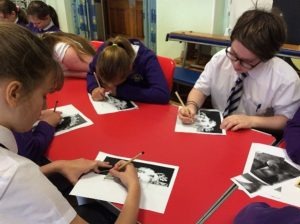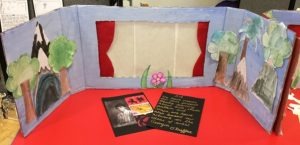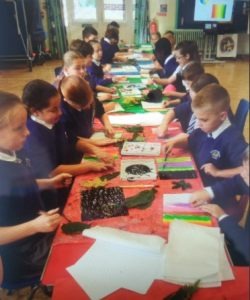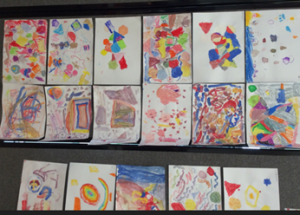Art
Art and Design enriches children’s learning and enables them to communicate their thoughts, ideas and observations in a practical and expressive way. It embodies some of the highest forms of human creativity. We are dedicated, as a school, to provide a rich and inspiring curriculum which fosters an open-ended exploration of creativity. Basic skills are introduced and then built on throughout school. Through the study of a wide range of artists, designers and cultural influence, our children will have the knowledge necessary to be modern, global citizens.
The National Curriculum for Art and Design, states that children should be able to:
- Experiment, invent and create their own works of art, craft and design.
- Think critically and develop a more rigorous understanding of art and design.
- Know how art and design reflect and shape our history and contribute to the culture, creativity and wealth of our nation.
Art and Design Delivery Statement
| Intent | Using the sequence provided by the Kapow Scheme of Work, we ensure that the skills, content and knowledge provided in the National Curriculum are covered with coherent and logical progression that builds on skills year on year. Teachers ensure that the skills are knowledge covered does not deviate from the knowledge statements provided but can tweak the theme to match with other wider topics. Teachers have a Skills Progression Ladder which clearly outlines the expected depth of skills and understanding for each year group in every area. |
| Implementation | Ensure that the teachers of the subject have excellent subject knowledge, and leadership supports that acquisition of this for NQT and non- specialist teachers. The Kapow Scheme of Work supports teacher subject knowledge and skills through tutorial videos and lots of visual support. Art work can be clearly modelled by teachers or through student videos, which allows children to break the work down into small, manageable steps. Art and Design is carefully resources to ensure that teachers have all the resources needed to carry out high quality lessons. |
|
Impact |
Learners develop detailed knowledge and skills. We check this through regular pupil voice and collecting evidence of outcomes which we measure against our age base progression grids. Pupils are well prepared at each stage to be ready for the next stage of learning. |
Art and Design in EYFS
Expressive Arts and Design (EAD) in Early Years enables children to explore and play with a range of media and materials and provides opportunities and encouragement for sharing thoughts, ideas and feelings through a variety of art, music, movement, dance, role-play and design and technology. In EYFS the children also start to be introduced to some artists and identify colour, texture, and technique. The EYFS learning is broken down into:
- Exploring and using media and materials: children safely use and explore a variety of materials, tools and techniques, experimenting with colour, design, texture, form and function.
- Being imaginative: children use what they have learnt about media and materials in original ways which represent their own ideas, thoughts and feelings.
Art and Design in KS1
Pupils should be taught:
- To use a range of materials creatively and design and make products.
- To use drawing, painting and sculpture to develop and share their ideas, experiences and imagination.
- To develop a wide range of art and design techniques in using colour, pattern, texture, line, shape, form and space.
- About the work of a range of artists, craft makers and designers, describing the differences and similarities between the practices and disciplines, and making links to their own work.
Art and Design in KS2
Pupils should be taught to develop their techniques, including their control and use of materials, with creativity, experimentation and an increasing awareness of different kinds of art, craft and design.
Pupils should be taught to:
- To create sketch books to record their observations and use them to review and revisit ideas.
- To improve their mastery of art and design techniques, including drawing, painting and sculpture with a range of materials (for example, pencil, charcoal, paint, clay).
- About great artists, architects and designers in history.
Please see the link for the National Curriculum for Art - National Curriculum in Art.



